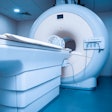Diagnostic error is the most common type of malpractice claim, making up nearly 29% of all claims and more than 35% of all malpractice payments, according to a new study published April 22 in BMJ Quality & Safety.
A research team led by Dr. Ali Saber Tehrani, from Johns Hopkins Hospital, analyzed a dataset of 350,706 paid malpractice claims filed between 1986 and 2010 in the National Practitioner Data Bank (BMJ Quality & Safety, April 22, 2013). They categorized the claims by type of error, outcome severity, and size of payments, as well as setting (inpatient versus outpatient).
There were 100,249 claims related to diagnostic errors, constituting 28.6% of all malpractice claims and 35.2% of total payments. Malpractice payments totaled $38.8 billion over the 25-year period after adjustment for inflation, with a mean per-claim payout of $386,849, according to the analysis.
The most frequent types of diagnostic error were as follows:
- Failure to diagnose: 54.2%
- Delay in diagnosis: 19.9%
- Wrong diagnosis: 16.0%
More diagnostic error claims in the database were outpatient (68.1%) than inpatient (31.2%); however, inpatient diagnostic errors were more likely to be fatal, at 48.4% versus 36.9% for outpatient claims, the researchers found. That said, they noted that only 25% of adverse events lead to permanent and serious harm; the events noted in the analysis probably reflect diagnostic errors with more serious medical consequences.
Malpractice claims related to diagnostic error peaked in the late 1990s, and there was a sharp decline in total payments from 2005 to 2010, according to the group. The drop may simply reflect delays in recording claims payments in the National Practitioner Data Bank, as well as the typical five-year cycle from the initial "act" of malpractice to the payment of a claim.



















